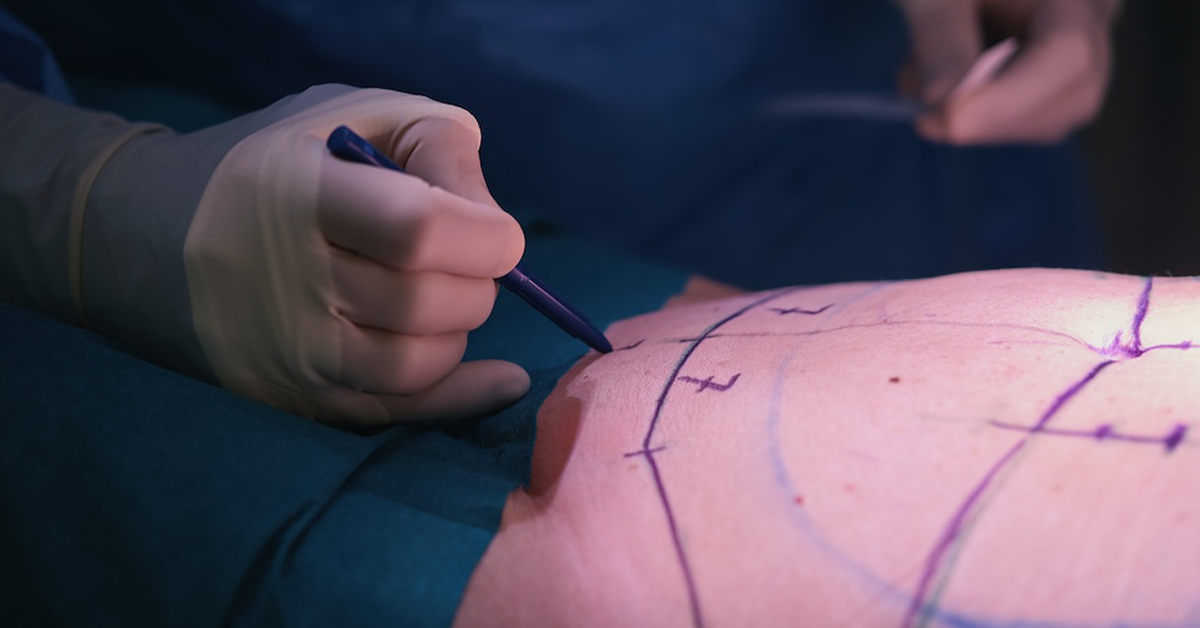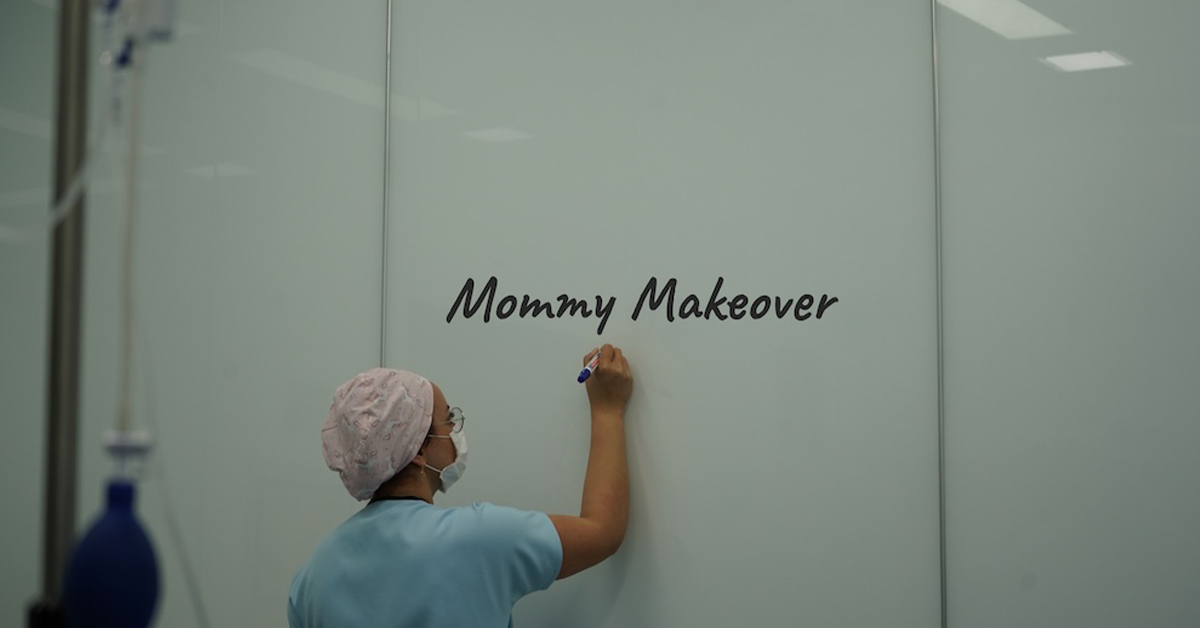Understanding Seroma After Tummy Tuck: Causes & Treatment
Seroma after Tummy tuck surgery is a common occurrence that can cause discomfort and delay the recovery process. This condition refers to the buildup of clear-yellow fluid under the skin near the surgical site.
While mild cases may resolve on their own, larger or symptomatic seromas may require medical intervention. Understanding the causes and available treatment options for Seroma is essential for a successful recovery.
What is a Seroma and Why Does It Occur?
A seroma is a fluid collection that forms under the skin near the surgical site following a Tummy tuck surgery, which can be a potential complication. During the surgery, the surgeon creates a pocket in the space between the skin and underlying muscles in order to remove excess fat and tighten the abdominal muscles. This space, known as the surgical cavity, is closed at the end of the procedure. However, sometimes fluid accumulates in this cavity, leading to the formation of a Seroma.
The fluid in a Seroma is usually clear or yellowish and consists of a combination of blood plasma, Lymphatic fluid, and tissue fluid. The exact cause of seroma formation is not fully understood, but it is believed to be a result of tissue disruption and damage to the lymphatic vessels and blood vessels during the surgery.
Seromas are more likely to occur in patients who have undergone extensive surgery, have a higher body mass index (BMI), or have a family history of seromas. Additionally, seroma formation can be influenced by factors such as low protein intake or poor wound healing. While seromas can occur after any Tummy tuck surgery, they are more common in procedures that involve extensive tissue removal and Liposuction.
While most seromas are mild and resolve on their own over time, larger or symptomatic seromas may require medical intervention. The treatment options for seromas include needle aspirations, where a thin needle is used to drain the fluid from the seroma, and Sclerotherapy, where a medication is injected into the seroma cavity to promote its closure. In some cases, a seroma catheter may be placed to continuously drain the fluid. Surgical excision may be necessary for persistent or recurrent seromas that do not respond to other treatments.
In addition to medical treatment, patients can help promote seroma healing and prevent recurrence by following postoperative care instructions. This may include limiting physical activity, applying warm compresses to the seroma area to improve circulation, keeping the incision clean and dry, and wearing compression garments to reduce swelling and support the healing process.
Risk Factors and Causes of Seroma After Tummy Tuck Surgery
Several factors can increase the likelihood of developing a seroma after Tummy tuck surgery, including the extent of the surgical procedure and the presence of obesity. Extensive surgery, particularly when combined with other procedures such as Liposuction, can disrupt the delicate balance of tissues and blood vessels, increasing the risk of fluid accumulation. Obesity, characterized by an excess of adipose tissue, can also contribute to tissue disruption and impede proper healing.
Other risk factors for seroma development include a family history of seromas and low protein intake. A genetic predisposition to developing seromas may make some individuals more susceptible to this complication. Additionally, protein plays a vital role in wound healing, and inadequate protein intake can impair the body’s ability to repair and regenerate tissue, increasing the risk of a seroma forming post-surgery.
When it comes to surgical techniques, the surgical approach used during Tummy tuck surgery can also influence the likelihood of seroma development. Techniques that involve excessive undermining of the tissues, such as the use of drains, may disrupt the lymphatic drainage system, leading to fluid accumulation. Furthermore, inadequate closure of the surgical incision can create spaces where fluid can collect, increasing the risk of seroma formation.
| Risk Factors for Seroma After Tummy Tuck Surgery | Causes |
|---|---|
| Extent of the surgical procedure | Disruption of tissues and blood vessels |
| Obesity | Tissue disruption and impaired healing |
| Family history of seromas | Genetic predisposition to fluid accumulation |
| Low protein intake | Impaired wound healing process |
| Surgical techniques | Undermining of tissues and inadequate closure of the incision |
Recognizing the Symptoms of Seroma After Tummy Tuck Surgery
It is important to be able to recognize the symptoms of seroma after Tummy tuck surgery in order to seek appropriate medical care. Seroma is a common complication where clear-yellow fluid accumulates under the skin near the surgical site. The following symptoms may indicate the presence of a seroma:
- Balloon-like swelling in the abdominal area
- Clear or yellowish fluid draining from the surgical incision
- Discomfort or pain near the incision site
These symptoms typically occur within the first weeks after surgery. The swelling may cause a visible bulge or distortion of the abdominal contour. The discharge from the incision may be continuous or intermittent.
If you experience any of these symptoms, it is important to consult your healthcare provider promptly for an accurate diagnosis and appropriate treatment. Your provider may perform a physical examination and order imaging tests, such as an ultrasound, to confirm the presence of a seroma.
| Symptoms of Seroma | Actions to Take |
|---|---|
| Balloon-like swelling in the abdominal area | Contact your healthcare provider for further evaluation |
| Clear or yellowish fluid drainage from the surgical incision | Keep the incision clean and dry; notify your healthcare provider |
| Discomfort or pain near the incision site | Discuss your symptoms with your healthcare provider for appropriate management |
Early detection and treatment of seroma can help prevent complications and promote successful healing. Your healthcare provider will determine the most suitable treatment approach based on the size, location, and severity of the seroma. In some cases, minor seromas may resolve on their own with time and conservative management.
However, larger or symptomatic seromas may require medical intervention. Your provider may recommend needle aspiration, a procedure in which the fluid is drained using a sterile needle and syringe. This can provide immediate relief from symptoms and promote healing. Compression garments may also be prescribed to minimize fluid accumulation and facilitate tissue reabsorption.
Treatment Options for Seroma After Tummy Tuck Surgery
Treating seroma after Tummy tuck surgery may involve different approaches, depending on the severity of the condition. Mild seromas that are small and asymptomatic may resolve on their own without intervention. However, larger or symptomatic seromas often require medical treatment to promote healing and prevent complications. Here are some common treatment options for seroma:
- Needle aspirations: This procedure involves using a needle and syringe to drain the fluid from the seroma. It is a minimally invasive technique that can provide immediate relief. However, multiple aspirations may be necessary if the seroma reoccurs.
- Sclerotherapy: This treatment involves injecting a sclerosing agent into the seroma cavity to promote the formation of scar tissue. The scar tissue helps seal off the cavity and prevent fluid accumulation. Sclerotherapy is often combined with needle aspirations for optimal results.
- Seroma catheter placement: In some cases, a catheter may be inserted into the seroma cavity to continuously drain the fluid. This allows for more efficient drainage and reduces the risk of seroma recurrence.
- Surgical excision: In severe cases where other treatment options have failed, surgical excision of the seroma may be necessary. This involves removing the entire seroma cavity to prevent further fluid accumulation.
It is important to note that the choice of treatment will depend on the individual patient and the specific characteristics of the seroma. Your healthcare provider will evaluate your condition and recommend the most appropriate treatment option for you.
In addition to medical treatment, there are steps you can take to aid in your own seroma healing:
- Limit physical activity and avoid strenuous movements that can disrupt the healing process.
- Apply warm compresses to the seroma area to promote circulation and help reduce inflammation.
- Keep the surgical incision clean and dry to prevent infection. Follow your healthcare provider’s instructions for wound care.
- Wear compression garments as recommended by your surgeon. These garments help reduce swelling and provide support to the surgical area.
“It is essential to seek medical care for seroma after Tummy tuck surgery. Untreated seromas can become encapsulated and may lead to further complications such as infection or abscess formation.”
Remember, seromas are a common occurrence after Tummy tuck surgery, and with proper medical care and self-care measures, they can be effectively managed. If you experience any concerning symptoms or if your seroma worsens, be sure to contact your healthcare provider for guidance and follow-up care.
| Treatment Option | Procedure | Advantages | Disadvantages |
|---|---|---|---|
| Needle aspirations | Draining fluid with a needle and syringe | Minimally invasive, immediate relief | Potential for repeated aspirations |
| Sclerotherapy | Injecting a sclerosing agent into the seroma cavity | Promotes scar tissue formation, reduces fluid accumulation | May require multiple sessions, potential for side effects |
| Seroma catheter placement | Inserting a catheter into the seroma cavity | Continuous drainage, reduces risk of recurrence | Potential for infection or catheter-related complications |
| Surgical excision | Removal of the entire seroma cavity | Permanent solution, prevents further fluid accumulation | Invasive procedure, potential for scarring and complications |
Conclusion
Seroma after Tummy tuck surgery is a common but manageable condition that requires appropriate medical care and preventive measures for optimal recovery. A seroma is the accumulation of clear-yellow fluid under the skin near the surgical site, and it can arise due to various factors such as extensive surgery, obesity, family history of seromas, and low protein intake. While mild seromas may resolve on their own, larger or symptomatic ones may require medical treatment.
If you experience a seroma after Tummy tuck surgery, it is essential to seek medical care. Your healthcare provider can evaluate the severity of the seroma and determine the most suitable treatment plan. One common treatment option is needle aspiration, where the fluid is carefully drained using a syringe. Additionally, you can aid in your own healing by limiting activity, applying warm compresses to the affected area, maintaining proper wound hygiene, and wearing compression garments.
Scheduling a Tummy Tuck in Miami, FL
If you’re interested in learning more about a Tummy tuck and want to take the first step, we encourage you to schedule a consultation with us. To make an appointment or to find out more information, you can call us at (305) 406-9055 or conveniently schedule a consultation online.







